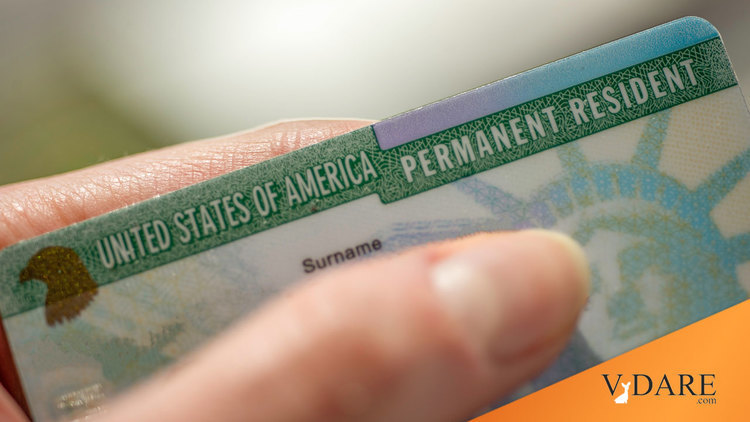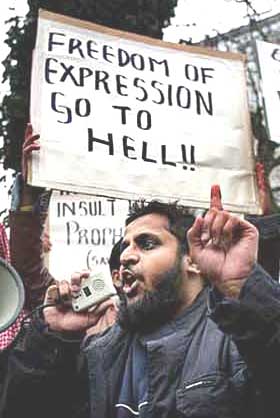


01/29/2011

Persons concerned about the survival of Western Civilization watch Europe’s degradation with alarm, as hostile Muslims use intimidation and violence to destroy freedom of speech, individual rights and women’s equality.
Those freedoms are increasingly under assault in America too; one example is the woman who suggested Everyone Draw Mohammed Day was forced into hiding by Muslim death threats.
As terror analyst Walid Phares noted last fall, “According to open-source reports, between 2001 and 2008, U.S. agencies stopped one or two terror attempts a year. However, from 2009 until today, the government has been uncovering one or two cases a month, a troubling growth in jihadi activities.”
The prudent thing for Washington to do would be to stop Muslim immigration entirely, since there is no right to immigrate, and national security is endangered by the historically adversarial group.
We should have ZERO Muslim immigration, not a continued open door to potential enemies.
But as a recent Pew study showed, more Muslims is what we are getting. A disturbing major point is that the world’s Muslim population will grow at double the rate of non-Muslims over the next 20 years. Demography is merciless, and history has shown that the higher the proportion of Muslims in a country, the worse the social conflict.
The main page for the Pew report is The Future of the Global Muslim Population, Projections for 2010-2030.
The specifics about the number of Muslims in America has its own sub-page:
Region: Americas, January 27, 2011The number of Muslims in the 51 countries in the Americas is projected to more than double in the next 20 years, from 5.3 million in 2010 to 10.9 million in 2030. Nevertheless, Muslims will remain a small minority in the region, accounting for an estimated 1.0% of the population in 2030, compared with 0.6% in 2010. Muslims in the Americas also will continue to represent a small share of the global Muslim population. The percentage of the world’s Muslims living in the Americas is expected to remain roughly the same (0.5% in 2030, compared with 0.3% in 2010).
Most of the projected growth in the region’s Muslim population will take place in North America, particularly in the U.S. and Canada. If current trends continue, the Muslim population in the United States is projected to more than double in the next 20 years, from 2.6 million in 2010 to 6.2 million in 2030.40 Canada’s Muslim population is expected to nearly triple, climbing from 940,000 in 2010 to 2.7 million in 2030. [ … ]
Muslim Immigration to the United States Muslim immigration to the United States has been steadily increasing since the 1990s, except for a slight dip following the 9/11 terrorist attacks in New York City in 2001. In 1992, nearly 50,000 Muslim immigrants were granted permanent residency status in the United States. By 2009, the annual number had increased to more than 115,000. If current trends continue, about 130,000 Muslims are expected to be granted permanent residency in the United States annually by 2030.
This report’s projections for Muslim immigrants to the U.S. are based partly on data from the 2003 New Immigrant Survey. Pew Forum staff used these data to calculate the proportion of all immigrants who are Muslim for each country from which large numbers of Muslims recently have come to the U.S. (This proportion does not necessarily match the religious composition of the country of origin. For instance, while Pakistan is 96.4% Muslim today, 89.5% of immigrants from Pakistan are estimated to be Muslim.) The proportion of immigrants who are Muslim for each country was then applied to the actual number of immigrants receiving permanent residency from that country, as reported by the U.S. Department of Homeland Security from 1992 to 2009.
These calculations show that Muslim immigrants have been rising both in absolute numbers and as a share of all immigrants receiving permanent U.S. residency. As previously mentioned, the number of Muslims receiving permanent residency grew from just under 50,000 in 1992 to about 115,000 in 2009, while the share that Muslims represent of all new permanent residents rose from about 5.1% in 1992 to about 10.2% in 2009. At the same time, the total number of immigrants receiving permanent residency status has fluctuated from year to year but has increased, on average, by about 2% annually from 1992 to 2009.
